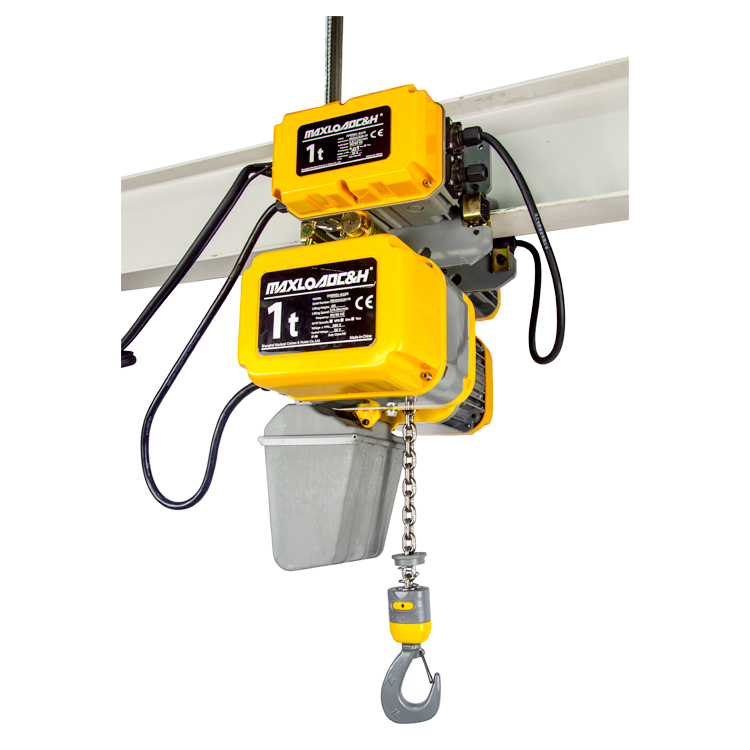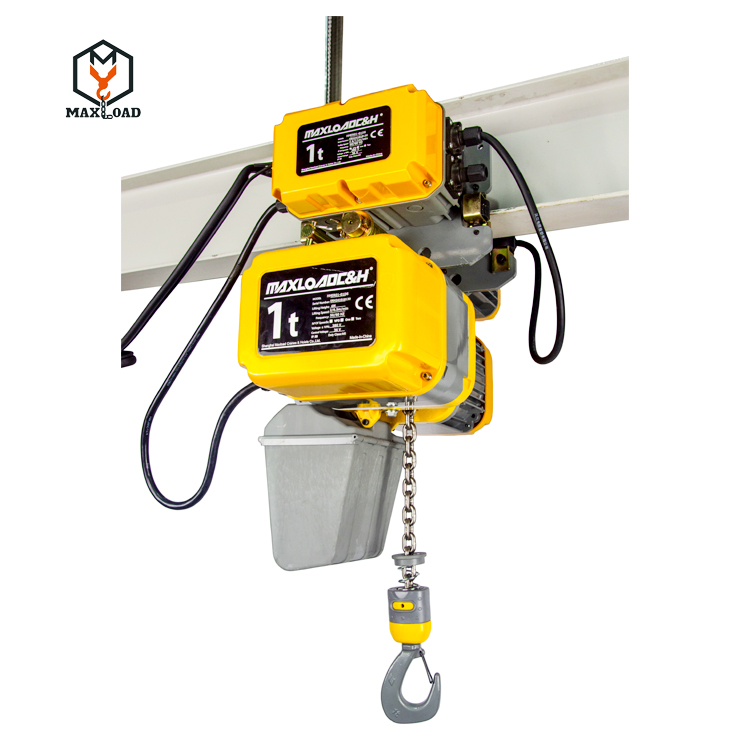Electric Hoists: "Vertical Handling Experts" in Modern Industry
As a core lifting equipment in modern industrial production, construction, warehousing, and logistics, electric hoists have become an indispensable tool for vertical handling operations due to their efficiency, safety, and flexibility. This article will comprehensively analyze the operating logic and value proposition of this "industrial muscle" from the perspectives of technical principles, classification, application scenarios, advantages and characteristics, maintenance points, and future development trends.
I. Technical Principles
An electric hoist is essentially a motor-driven lifting mechanism that uses electricity to lift and lower loads vertically or move them horizontally. Its core structure consists of a motor, a speed reducer, a drum (or sprocket), a brake, a control system, and safety devices. During operation, the motor converts high-speed rotation through the speed reducer into low-speed, high-torque output, driving the drum or sprocket to wind the wire rope or chain, thereby lifting or lowering the load. The brake automatically engages in the event of a power outage or overload, ensuring safe operation. Limit switches prevent over-travel, preventing equipment damage or accidents. Control systems typically utilize wired handles, wireless remote controls, or smart panels. Some high-end models support PLC programming, enabling coordinated or automated operation of multiple units. Safety features include not only basic brakes and limit switches, but also overload protection, emergency stop buttons, and anti-fall devices, forming a multi-layered safety net.

II. Scenario Adaptation
Based on their drive method, structural features, and application requirements, electric hoists can be categorized into various types, including chain hoists, wire rope hoists, miniature electric hoists, and explosion-proof electric hoists.
Chain hoists utilize high-strength alloy chains as a transmission medium, offering small size, light weight, and precise positioning. They are suitable for applications such as precision assembly and equipment maintenance. Wire rope hoists utilize a wire rope winding system, offering high lifting heights and strong load capacity. They are commonly used for lifting large equipment and handling heavy materials. Miniature electric hoists, designed for lightweighting, are compact and flexible, making them suitable for use in homes, small studios, or confined spaces. Explosion-proof electric hoists, with their special explosion-proof design, can be safely used in flammable and explosive environments. They are widely used in hazardous locations such as the petrochemical industry and coal mines.
III. Wide Range of Applications and Value
The popularity of electric hoists stems from their strong adaptability. In industrial manufacturing, they are often used in production line material transfer, equipment installation and commissioning, and mold replacement, significantly improving operational efficiency and safety. For example, in automotive manufacturing workshops, electric hoists can quickly lift large components such as engines and gearboxes, reducing the risks of manual handling. In electronics factories, miniature electric hoists can precisely position delicate components, eliminating manual errors.
In construction, electric hoists are the mainstay of vertical transportation. Whether it's high-rise building exterior wall construction and curtain wall installation, or lifting rebar and concrete in bridges and tunnels, their stable and reliable performance ensures project progress and worker safety. In warehousing and logistics, electric hoists, used in conjunction with overhead cranes and single-girder cranes, enable efficient loading, unloading, stacking, and sorting of cargo, making them particularly suitable for container handling in large warehouses and port terminals.

IV. Core Advantages
Electric hoists offer significant advantages over traditional manual hoists or hydraulic lifting equipment. First, they are exceptionally easy to operate, enabling precise control via remote control or buttons, reducing labor costs and labor intensity. Second, they offer significant efficiency advantages, with high-speed lifting and automatic positioning features significantly reducing operation time. Third, they offer superior safety features, with multiple protection mechanisms effectively preventing accidents such as overloads, falls, and collisions. Fourth, they offer low maintenance costs, with a simple structure and standardized components, making troubleshooting and repair relatively easy.However, safety is always a paramount consideration when using electric hoists. Operators must undergo professional training and be familiar with the equipment's performance and operating procedures. Key components, such as the motor, chain/rope, and brake, must be regularly inspected for wear. Overloading should be avoided to prevent damage. Protective measures or specialized models should be used when operating in harsh environments (such as high temperatures, humidity, and dust). Routine maintenance emphasizes lubrication, cleaning, and tightening to extend the equipment's life.
V. Future Development Trends and Technological Innovation
Electric hoists are evolving towards intelligent, energy-efficient, and modular designs. In terms of intelligence, IoT technology enables real-time monitoring of equipment status, fault warnings, and remote diagnosis. AI algorithms are combined to optimize work paths and enhance automation. Regarding energy conservation, high-efficiency motors, variable frequency control technology, and energy recovery systems are employed to reduce energy consumption and carbon emissions. Modular design utilizes standardized components to enable rapid assembly and functional expansion to meet diverse needs.
Furthermore, the use of lightweight materials (such as carbon fiber chains), the introduction of wireless charging technology, and the optimization of human-machine interfaces are driving the development of electric hoists towards greater efficiency, safety, and user-friendliness. In the future, with the deep integration of technologies like 5G and big data, electric hoists are expected to become intelligent handling nodes in smart factories, enabling seamless collaboration with AGVs, robots, and other equipment, building smarter and more flexible production and logistics systems.
Conclusion
As the "vertical handling expert" in modern industry, electric hoists have become indispensable lifting equipment across various industries due to their mature technology, strong adaptability, and safety and reliability. With the continuous deepening of technological innovation, their intelligence and energy-saving levels will be further improved, providing stronger support for efficient and safe operations in industrial production, construction, logistics and warehousing, etc. In the foreseeable future, electric hoists will continue to play a vital role in driving the process of industrial automation and intelligentization to new heights.



 0086 17717607077
0086 17717607077
 0086 (021) 5999 9072
0086 (021) 5999 9072
 market@chnhoist.com
market@chnhoist.com







